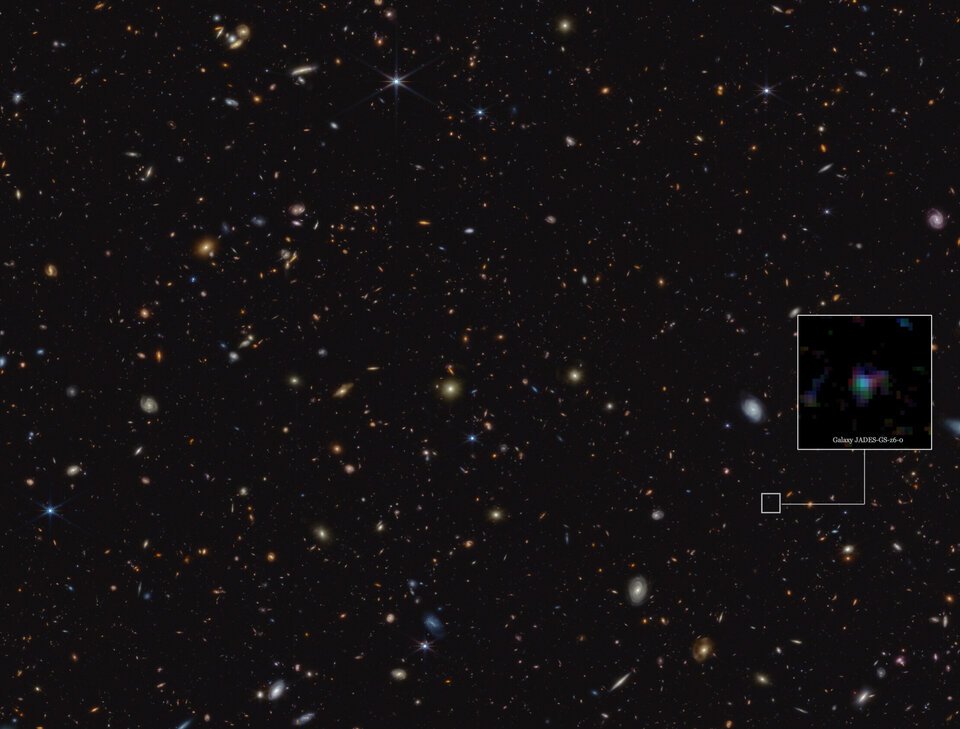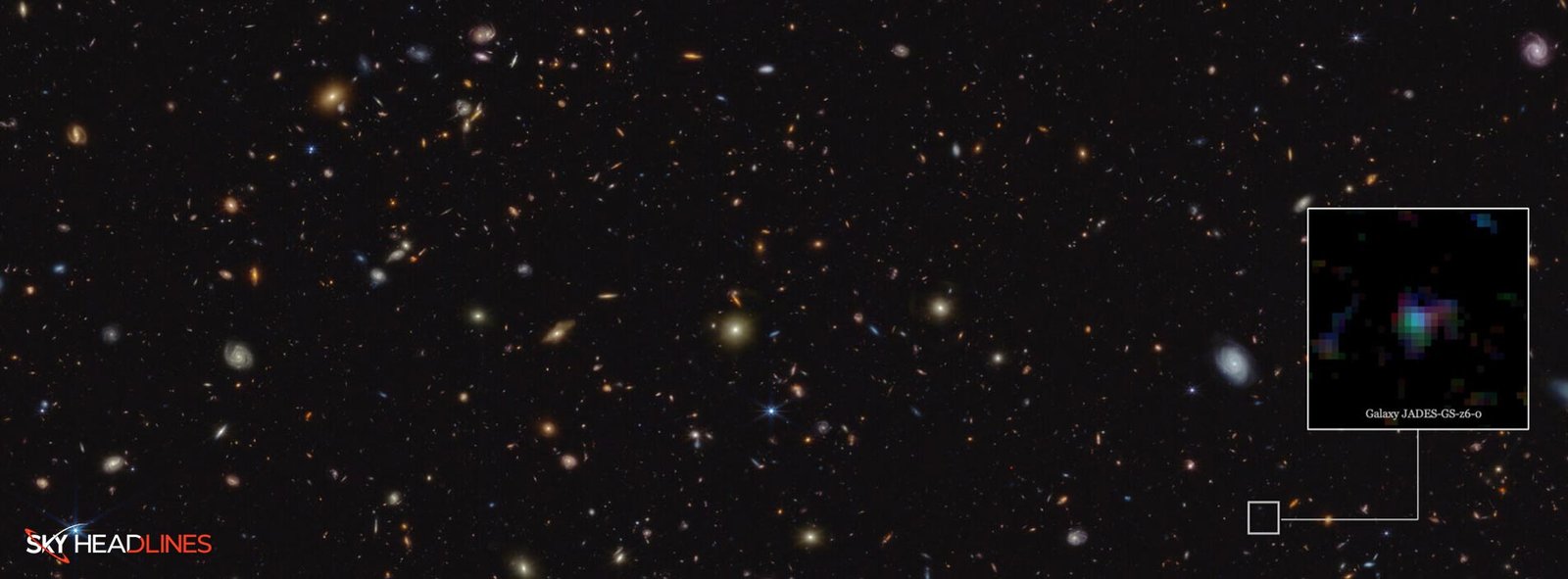Webb has recently discovered carbon-rich dust grains, and it is one of the billion cosmic years happening! Yes, it is true. Let’s uncover some of the crisp, and valuable knowledge about this discovery in the following paragraphs.
What groundbreaking discovery did Webb make regarding carbon-rich dust particles in the early universe?
The NASA/ESA/CSA James Webb Space Telescope has made an unprecedented discovery, detecting chemical traces of carbon-rich dust particles at Redshift, around one billion years following the inception of the universe. The presence of polycyclic aromatic hydrocarbons (PAHs), intricate carbon-based compounds, has been associated with comparable occurrences in more contemporary cosmic observations. However, it was previously believed that PAHs did not emerge during the initial billion years of the universe.
So, this finding raises the exciting possibility that Webb may have seen a different type of carbon-based molecule. For example, the first stars or supernovae may have made tiny grains that look like graphite or diamond. This observation opens up interesting questions about how cosmic dust is made and about the first stars to form in our universe. It was made possible by Webb’s incredible sensitivity.
Now, you must be wondering how Webb used high sensitivity telescope to view it. That is why we have curated the following part too.
Ancient Carbon-Rich Dust Grains: Insights from Webb Telescope’s High Sensitivity
Most of the time, clouds of gas and cosmic dust are in the places in our universe that look like they are empty. The dust consists of a variety of grains, each with distinct sizes and shapes. These grains are formed through diverse processes and subsequently released into space, often propelled by phenomena like supernovas. This stuff is important to the development of the universe because dust clouds are where new stars and planets are born.
But dust can also make it hard for scientists to see certain parts of space because it absorbs light from stars at certain wavelengths. On the other hand, one good thing is that certain molecules will always absorb or react in some other way with certain colors of light.
This means that scientists can figure out what cosmic dust is made of by looking at the light wavelengths that it blocks. With this method and Webb’s high sensitivity, a group of scientists from around the world were able to find carbon-rich dust grains only a billion years after the universe was created.
Aside from this, we will give you some knowledge about the importance of this discovery. The following mentioned information is just for you!
What is the significance of carbon-rich dust grains with a 217.5-nanometer pattern in very early galaxies?
Joris Witstok of the University of Cambridge, the lead author of this work, elaborates:
“Carbon-rich dust grains can be particularly efficient at absorbing ultraviolet light with a wavelength around 217.5 nanometers, which for the first time we have directly observed in the spectra of very early galaxies.”
This 217.5-nanometer pattern has been seen before in a universe that is much closer to us and much more recent, both in our own Milky Way galaxy and galaxies up to Redshift. It has been linked to two different types of carbon-based species: polycyclic aromatic hydrocarbons (PAHs) and Nano-sized graphitic grains.
Modern models say that it should take a few hundred million years for PAHs to form because they are very complicated chemicals. So, it would be strange if the team had seen the chemical evidence of a mix of dust grains that included species that were unlikely to have formed yet. But the science team says that this finding is the earliest and farthest direct sign of this type of carbon-rich dust grain.
Besides this, we are also going to tell you what are the compositions of carbon-rich dust grains.
Cosmic Dust Composition: Clues from a 226.3-nanometer Pattern Shift
The facts of what was seen may hold the answer. As was already said, the pattern at 217.5 nanometers is linked to the mixture of PAHs and tiny graphitic grains in space dust. However, the peak of the pattern that the team saw was 226.3 nanometers. A nanometer is a millionth of a millimeter, and this difference of fewer than ten nanometers could be due to measurement mistakes. Another interpretation could be that the team discovered a shift in the composition of cosmic dust from the early universe.
Witstok, added:
“This slight shift in wavelength of where the absorption is strongest suggests we may be seeing a different mix of grains, for example, graphite- or diamond-like grains. This could also potentially be produced on short timescales by Wolf-Rayet stars or supernova ejecta.”

Now, if you are confused about the “if & but” points of the dust grains, then the following information is just for you.
What are the potential causes behind the surprising blend of dust grains discovered in the early universe?
The discovery of this feature in the early universe came as a complete surprise to scientists, prompting them to ponder over the potential causes behind the intriguing blend of dust grains. This requires using what you already know from data and models.
Witstok thinks that diamond grains formed in the ejecta from a supernova because models have shown that this is how Nano-diamonds could form. Wolf-Rayet stars are a good choice because they get very hot at the end of their lives, and very hot stars tend to live quickly and die young.
This means that in less than a billion years, enough generations of stars will have been born, lived, and died to spread carbon-rich dust into the surrounding space dust. Models have also shown that certain types of Wolf-Rayet stars can make carbon-rich grains, and, just as important, that these grains can survive the violent deaths of these stars.
However, elucidating these findings remains challenging, given our current understanding of the historical formation of cosmic dust. Consequently, these observations will serve as valuable input for refining models and directing future investigations.
As carbon-rich dust grains give the signs of the early universe, so let’s see how Webb’s telescope is describing it.
Webb Telescope Gives Valuable Knowledge About Cosmic Dust Origins in the Early Universe
Before Webb, scientists had to combine the views of several galaxies to get strong enough signals to figure out the number of stars in the galaxies and how the dust in space affected their light. Importantly, scientists could only study galaxies that were pretty old and had been around for a long time, giving stars and dust plenty of time to form. This made it hard for them to find the real sources of cosmic dust.
With Webb, scientists can now look at the light from individual dwarf galaxies in the first billion years of the universe’s history in great detail. Webb finally makes it possible to find out where cosmic dust comes from and what part it plays in the first important stages of galaxy evolution.
A team member Roberto Maiolino of the University of Cambridge and University College London, said:
“This discovery was made possible by the unparalleled sensitivity improvement in near-infrared spectroscopy provided by Webb, and specifically its Near-Infrared Spectrograph (NIRSpec).
The increase in sensitivity provided by Webb is equivalent, in the visible, to instantaneously upgrading Galileo’s 37-millimeter telescope to the 8-meter Very Large Telescope (one of the most powerful modern optical telescopes).”
Webb Telescope Unveils Cosmic Dust Origins in Early Dwarf Galaxies
As part of the JWST Advanced Deep Extragalactic Survey, or JADES, these observations were made. The camera was used for about 32 days to find and study faint, faraway galaxies. This program has helped find hundreds of galaxies that were around when the universe was only 600 million years old.

This includes some of the most distant galaxies that have been found so far. The number of galaxies and how old they were much more than what had been seen before Webb was launched. This recent discovery concerning dust grains from the early universe offers valuable insights into the evolution of stars and galaxies during the initial billion years of cosmic history.
A team member Renske Smit of the Liverpool John Moores University in the United Kingdom, said:
“This discovery implies that infant galaxies in the early universe develop much faster than we ever anticipated. Webb shows us a complexity of the earliest birthplaces of stars (and planets) that models are yet to explain.”





